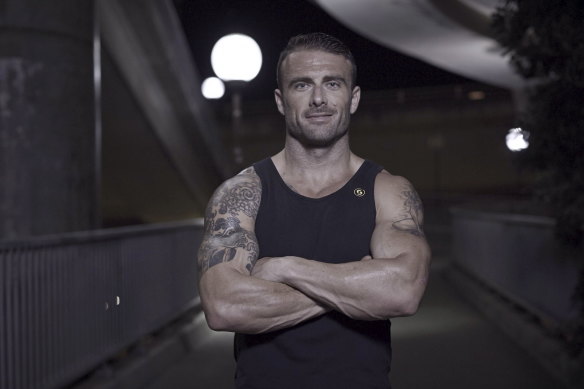
Rather than encouraging healthy living and self-improvement, she says looksmaxxing, with its “ideal of becoming an apex man”, has misogyny at its core, with links to incel culture.
“For this new group of boys and young men, looksmaxxing makes them feel like, ‘I deserve women’,” says Rosdahl. “Or even more dangerously, they start asking, ‘Why do I still not get a woman, even after all this work?’”
Teenagers hitting the gym
Gym owners and personal trainers have also noticed the impact of looksmaxxing.
Steve “Commando Steve” Willis, who runs sessions for under-18s at his gym in Sydney’s Rouse Hill, says younger gym-goers are chasing bodies they see on social media.
Willis says the young people he trains are often getting fit for sport, but that’s not to say the social trend isn’t an underlying factor for many. Teenage clients often come to him after failing to get results, or getting injured, while training unsupervised in 24-hour gyms or following online programs.
Dalbo and Willis say training with free weights is safe for teenagers, especially under supervision, although care should be taken during growth spurts.

Steve “Commando Steve” Willis says he only recommends creatine for clients in their 20s or late teens, or elite athletes.
What is creatine and is it safe?
Creatine occurs naturally in muscles and increases the rate at which adenosine triphosphate (ATP), the energy driving the body at a cellular level, is regenerated. Taking it before a workout can help someone do more repetitions of an exercise and recover faster, creating greater stimulus for the body to repair and grow muscle.
Dalbo says there isn’t much research into creatine’s safety for teenagers, but there is strong evidence for its efficacy and safety for adults in appropriate doses. He says protein supplements are safe for under-18s, but probably an unnecessary expenditure.
Willis says he only recommends creatine for clients in their 20s or late teens, unless they’re training for elite sport, and only then with the advice of a dietitian or nutritionist.
“You’ve got to be doing the work,” he says. “It’s not just something that you take and miraculously, things are going to change.”
What about steroids?
Dalbo is more concerned about online fitness influencers – some with hundreds of thousands of followers – who openly document their cycles on anabolic steroids, alongside glamorous “party” lifestyles.
He fears it might make more boys and young men who have never used steroids less afraid of their dangerous side effects.
Loading
“You’re like, ‘If I look good and I feel good, and I’m doing things I couldn’t do – how in the world could these things be bad for me?’” says Dalbo.
Willis, who found fame as a trainer on The Biggest Loser from 2007 to 2015, admits the TV show’s approach to body image was divisive, but says it prompted the industry to adopt more “vigilant practices” around the “underlying issues” behind the motivation to get fit or lose weight.
He says, as a father to young children who himself started weight training in his early teens, he understands today’s young people are uniquely vulnerable.
“You’re always trying to fit in,” he says. “You want to be seen as one of the pack.”
Make the most of your health, relationships, fitness and nutrition with our Live Well newsletter. Get it in your inbox every Monday.




























